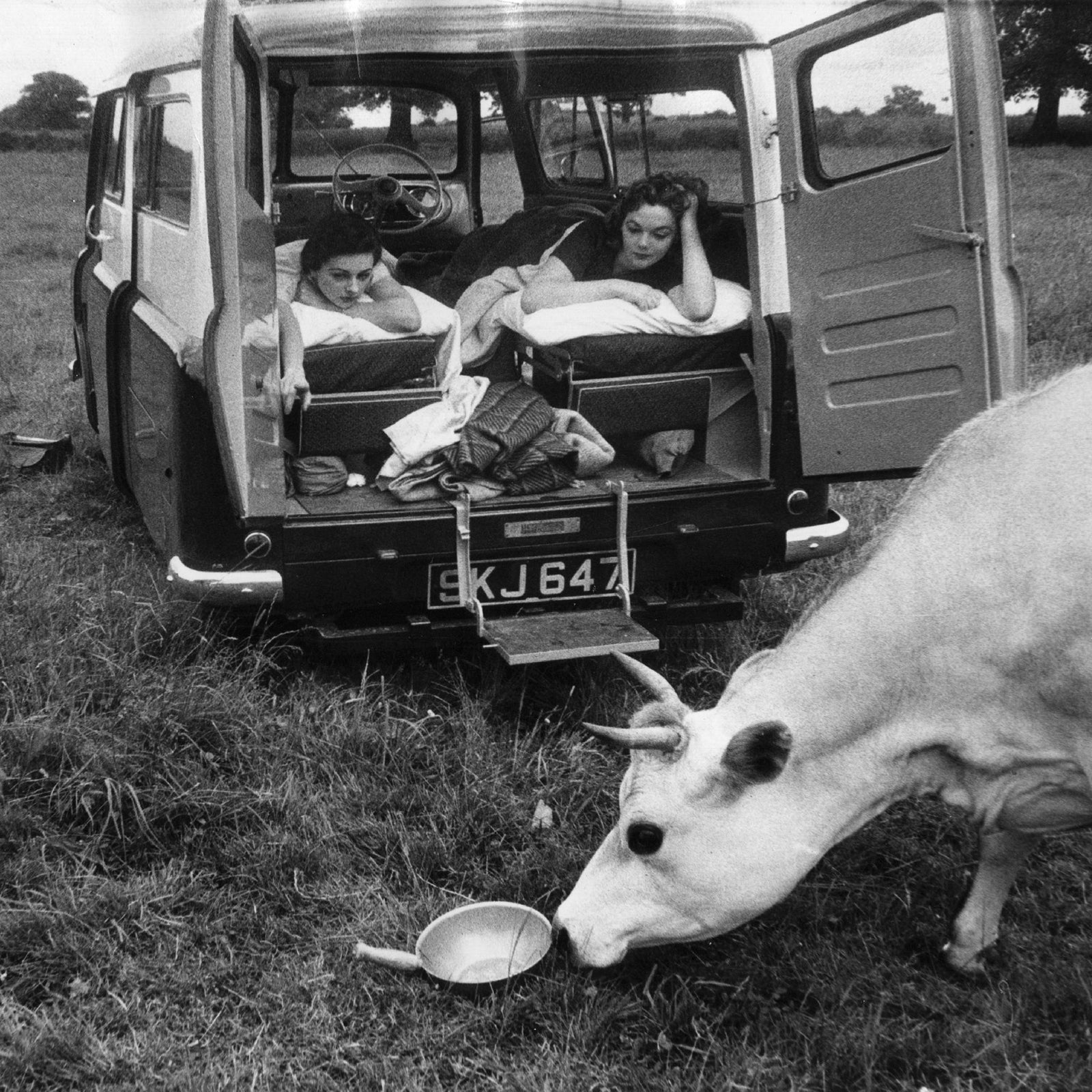Back in the day, iconic filmmaker Warren Miller slept in a tow camper as he traveled from ski area to ski area, shooting and editing footage. Folk singer and activist Katie Lee╠řlived rough╠řduring╠řher crusade against the construction of the Glen Canyon Dam, roaming the land and running rivers and╠řsaying at one point that sheÔÇÖd rather be a coyote than part of the human race. │█▒╣┤ă▓ď╠ř░ń│ˇ┤ă│▄ż▒▓ď▓╣░¨╗ň╠řspent years selling climbing hardware from a pickup truck that he lived in before founding Patagonia.╠ř
Dirtbagging has long been a defining element of outdoor culture. Skiers, surfers,╠řand climbers in particular often consider a season of itinerant vagabonding a right of passage. The modern archetype, of course, is Alex Honnold, who╠řbefore Free Solo╠řwas perhaps equally known for being the worldÔÇÖs most daring climber and living in a sweet╠řadventure van. But now╠řacross North America, dirtbagging is under serious threat. Municipalities from Southern California to the Canadian Rockies╠řare responding to spiking numbers of people sleeping in their vans and pickups in town parking lots, near trailheads and beaches, and adjacent to scenic highways by passing laws that prohibit╠řvehicle camping and enforcing historically ignored restrictions on where you can bed down for the night without having to pay for the privilege.╠ř
I know what youÔÇÖre thinking: itÔÇÖs all those damn╠ř#vanlife╠řkids. But recreationalists in tricked-out $100,000 Sprinters and retrofitted VWs are just one class of people now camping in their rides. Along with the van campers is the much larger group of RVers, a market segment thatÔÇÖs expected to grow by 50 percent in the next six years. Then there are the people pushed into sleeping in their vehicles by economics. In dreamy outdoor towns, skyrocketing rents, caused in part by the rise of Airbnb╠řand nutty home prices, have stripped communities of affordable housing. This has some folks opting to live in their trucks and vans on the fringes of towns they consider home instead of forking over a huge percent of their wages to a landlord. In Whistler, British Columbia, ski-area workers are . Other people simply have no other choice. Without the vehicle, their next step might be tent camping in a park or living on the streets.
Dirtbags╠řhave always faced resistanceÔÇöChouinard was once arrested for vagrancy in ArizonaÔÇöbut we appear to be scaling toward peak dirtbag numbers and a crisis in dirtbag tolerance.╠řOutdoor sports destinations╠řfrom Santa Barbara, California, to Boulder, Colorado,╠řare on vehicle camping. In the summer of 2018, van campers in Aspen, Colorado,╠řwere ╠řlot after one squatter reportedly brandished a hatchet at something other than kindling. Allyssa Ravasio, founder of the campground-booking site Hipcamp, told me that authorities have recently become more aggressive about ticketing van campers along a stretch of California Highway 1╠řnear Big Sur. (Sleeping outside of campgrounds has been illegal there for years.)╠ř╠ř
Dirtbags╠řhave always faced resistanceÔÇöChouinard was once arrested for vagrancy in ArizonaÔÇöbut we appear to be scaling toward peak dirtbag numbers and a crisis in dirtbag tolerance.
Perhaps the most newsworthy recent crackdown took place in Squamish, British Columbia, which sits about halfway between Vancouver and Whistler and is CanadaÔÇÖs funhogging epicenter. (Funhogging, if you didnÔÇÖt know, is a term originally popularized by Chouinard, the skier Dick Dorworth, and a crew of heavily bearded climbers who╠řtook an epic dirtbagging journey in the late 1960s that culminated with an ascent of Fitz Roy, a classic Patagonian peak.) Squamish has seen its population grow from 15,000 to 20,000 since 2006, and the number of residents is projected to double in size by 2040. Increasingly, the town has become a hot spot for summer vehicle campers, with around╠ř2,000 to 3,000 rolling through a year. Meanwhile, a local source estimates that there are some 200 folks who work in town for six or more months while living in their cars, then disappear for stints to play in the mountains or pursue other work. Some of them are camping legally in campgrounds and the local Walmart parking lot, but many are not.╠ř
All this spurred town administrators to draft a bylaw in April that would have made it illegal to camp in a vehicle on any public land within╠ř40 square miles╠řof the district. (Camping on the street is already illegal.) That led to a highly polarized community-wide debate over vehicle camping. At the heart of the issue is the basic challenge of volume. With a limited number of discrete places for people to park and sleep, the overflow ended up in residential neighborhoods, near schools, and along highways. Strange vans in front of the house are red flags for parents, but advocates of the bylaw also noted an etiquette problem. Many vacationing van campers have been known to let their dogs run wild, relieve themselves in the most convenient bush, and not clean up their trash (a safety concern in bear country).
Anyone whoÔÇÖs attempted to crash in their truck on a road trip in the past few years has likely experienced this growing mess firsthand. In 2018, I borrowed a buddyÔÇÖs van for a ski mission to Jackson Hole, Wyoming, and had a hell of a time finding a legal place to park. Eventually, I gave up and clandestinely slotted in between two semitrailers at a local park-and-ride lot. On weekends from 2015 to 2017, while sleeping in my familyÔÇÖs Honda Element with my son on╠řthe high school mountain-bike race circuit in Colorado, it was extremely difficult to find places to park that were both close to trails and not posted with no-camping signs.╠ř╠ř
The good news is that some places are starting to take steps to address the problem.╠řJackson, Wyoming, is testing a system that allows businesses to buy at the local rec-center lot for employees that choose to vehicle camp. So-called safe lots╠řhave been , Seattle and Los Angeles╠řand are now being discussed in outdoor towns. This summer╠řthe Winter Park ski area in Colorado opened up one of its lots to vehicle campersÔÇömostly mountain bikersÔÇöon a trial basis. The parking comes free, and the resort only asks that campers not make a mess.╠ř
Those kinds of initiatives will help, but a lot more needs to be done╠řbecause the interest in car camping is surging. HipcampÔÇÖs Ravasio told me that her company is working with private landowners to increase the inventory of pay sites, specifically in some cases for the burgeoning van crowd. ÔÇťThere simply arenÔÇÖt╠řenough good, safe places for people out there right now,ÔÇŁ she says.╠ř
A key underlying challenge is the lack of affordable housing in outdoor towns. The Jackson Hole Community Housing Trust recently put in 28 units to help house everyone from schoolteachers to restaurant managers, but the restrictions the group╠řworks under mean thereÔÇÖs very little it can do to help seasonal service workers living in vehicles. ÔÇťThese are people that are contributing to the critical infrastructure of the town,ÔÇŁ says Alison Lee, director of the trustÔÇÖs rent and homeowner program. ÔÇťThey need places to live.ÔÇŁ
If we canÔÇÖt pull it together, we risk losing out on a way of life that has been crucial to the outdoor community.
As municipalities grapple with the big decisions, vehicle campers need to clean up their act, especially people who are simply enjoying a lower-cost vacation. This means never parking in residential areas, using public restrooms or hauling a chemical toilet, and taking responsibility for their own needs. The managers that opened the Winter Park lot to overnighters╠řwere shocked to hear complaints from some campers demanding services for no charge. They were still more dismayed to have to pick up after them.╠ř
If we canÔÇÖt pull it together, we risk losing out on a way of life that has been crucial to the outdoor community. In my many years in outdoor publishing, I knew more than a few striving interns that slept in their trucks. Before settling in Utah, my good friend, the photographer , slept in snow caves and cars around the Mountain West, as did more East Coast emigrant ski bums than I could count. Dirtbags arenÔÇÖt bums. TheyÔÇÖre nonconformists. TheyÔÇÖre dreamers.╠ř╠ř
The good folks in Squamish appear to know this. After the bylaw to ban╠řsleeping in vehicles was drafted, opponents from disparate backgrounds quickly organized in response. ÔÇťThey tried to pass the ban in a single night,ÔÇŁ says Squamish vehicle camper and climber Rufio West, who is now codirector of the Vehicle Residents of Squamish advocacy group. ÔÇťThey said they wanted to deal with the visitation issue with out-of-towners, which in the townÔÇÖs defense, has caused problems with trash. But people that live here and visitors alike saw the law as unfair. We formed VRS this past May and went to the council meeting, along with 80 opponents. Beyond banning camping in a few gray areas near ecologically sensitive spots, they ended up only passing a measure saying that something needs to be done.ÔÇŁ╠ř╠ř
Yes, something does need to be done. But simply outlawing dirtbagging isnÔÇÖt the answer.╠ř


